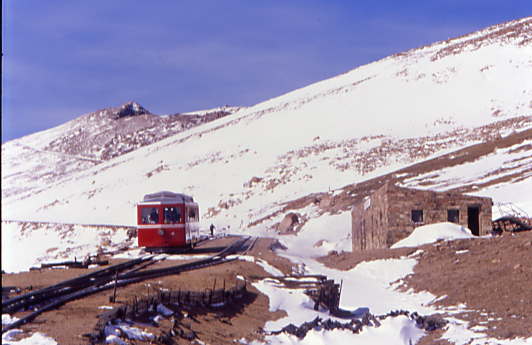
Chris Parker and I left the Pikes Peak Historical Street Railway, retracing our route back to Interstate 25 and going south to US 24 West towards Manitou Springs. We took the exit for Manitou and headed up the hill into town.
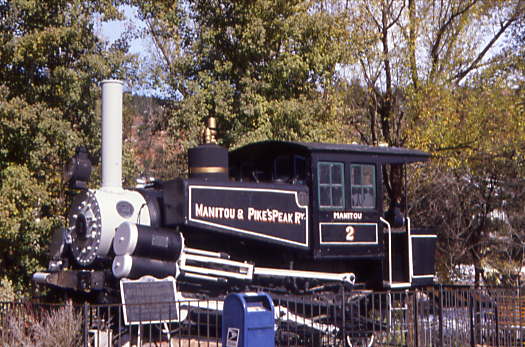
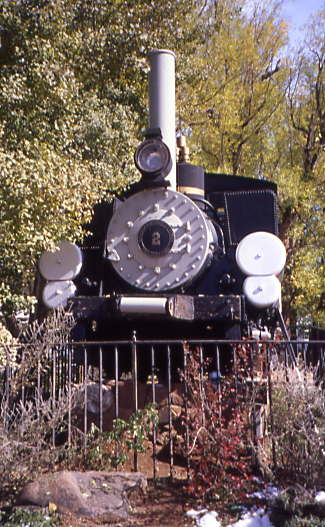
Once there I had to pull over so we could get a few pictures of Manitou & Pike's Peak Railway 2 on display in downtown Manitou Springs. We turned left on Ruxton Avenue and headed through town to the parking area of the Manitou & Pike's Peak Railway.
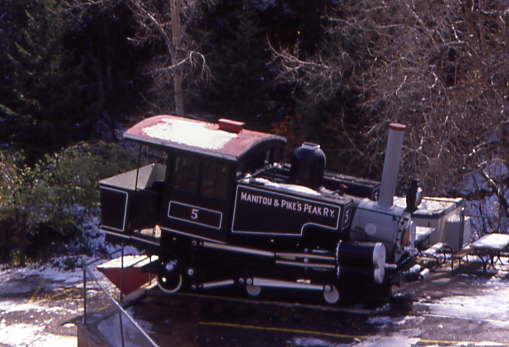
I parked the car and saw Manitou & Pike's Peak Railway 5 on display at the depot. We walked down the parking lot to the station.
The Manitou and Pikes Peak Railway Station.
Here is where I picked up Chris Parker's and my tickets for our trip this afternoon.
A look down at the station area.
Looking towards the shops.
A view of the shop area before the trip.
One of the GE cars sitting outside that is used mainly for work train service. I took some pictures around the station area and shops including one of the GE cars sitting outside that is used mainly for work train service. I walked down to the railroad's offices and met Spencer Wren, Jr. and inquired about a shop tour for my story. He said to return in ten minutes and he would escort me on a tour. I found Chris, who had just ordered lunch, and he told me to take the tour.
A brief historyThe Manitou and Pikes Pike Railway is the highest rack railway in the world as well as being the highest railroad in North America. It is a cog railroad, which means that the railroad uses a geared cog wheel which meshes into a special rack rail which is mounted in the middle of the rails. This allows the trains to climb grades up to 48%. This system allows the train to travel up steep grades but at a slower speed that most other railroads. Top speed here is 9 MPH. This railroad has a maximum grade of 25% using an ABT rack system. The story of this railway goes back to the late 1880's when Zalmon Simmons rode to the top of Pikes Peak on a mule. Simmons was amazed by the view and decided a more comfortable way to get to the summit was needed. In 1889 the Manitou and Pikes Peak Railway Company was founded. It took two years to construct the railway and on June 30, 1891 the first passenger train made it to the summit of Pikes Peak. The train was pushed by steam engines built by the Baldwin Locomotive Works. The first three engines were named Pikes Peak, Manitou and John Hulbert, but were soon given numbers instead of names. In the late 1930's gasoline and diesel locomotives were developed and soon came to the railroad. The No. 7 is believed to be the world's first rack railcar ever built, with its first run on June 16, 1938. Next came the first diesel electric cog locomotive delivered from General Electric. When coupled with the streamlined coaches, these engines became the railroad's main fleet though 1965. The modern era on this unique railroad begin with rail cars from the Swiss Locomotive Works in Winterthur, Switzerland. These are the cars that are still used today. Additional cars came from the Swiss Locomotive Works in 1976, 1984 and 1989.
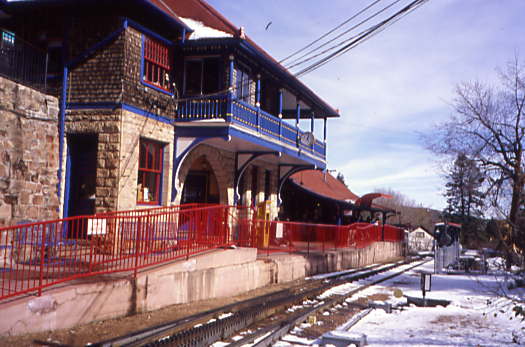
The view at track side at the station.
Shop Tour 10/28/2006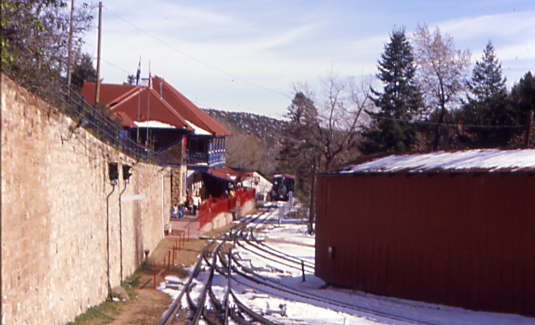
About ten minutes later, I met Spencer and we walked up to the shop for my tour.
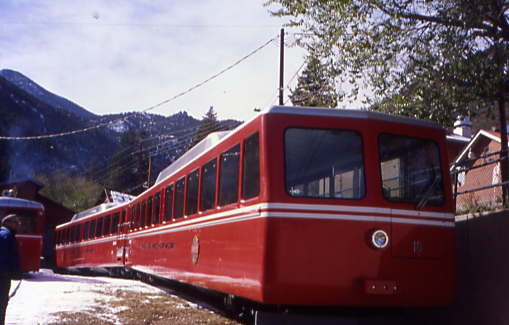
Car 18 was waiting for today's trip.
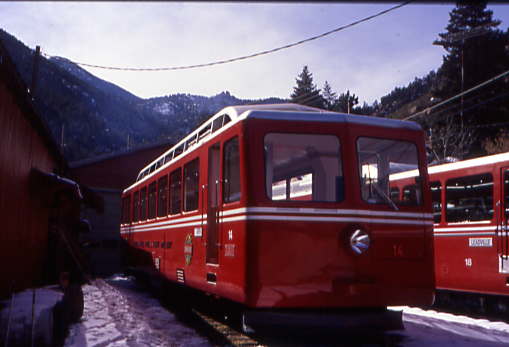
Car 14 was sitting outside as well.
We walked inside the shop where I met the crews and learned the plan for today's trips. A short one-car train would leave first and head to Windy Point. Our two-car train would follow and go into the siding there. Once the one-car train left, we would return to the mainline and try to go further towards the summit. After both trains had gone to Windy Point, they would drop down to 4 Mile and a rest stop for all passengers.
Walking through a door took me inside to where the cars are very well maintained.
Another View of the cars.
Back in the shop area, I saw an axle being worked on.
I found old cogs that had been replaced.
New cogs were on hand ready to be installed on the train sets
Another view inside the shop.
The drop pit had a rack hanging over it. We walked back to the station and I thanked Spencer for an interesting shop tour.
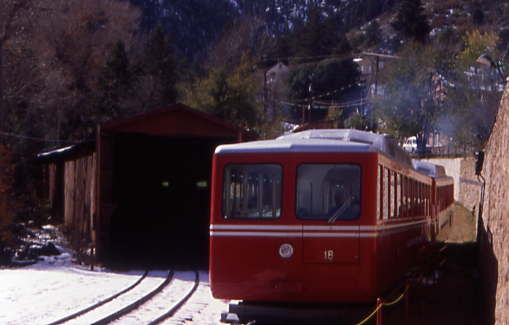
The train sets came in with the one-car train attached to the front of our two-car set.
The Ride 10/28/2006The passengers boarded the named cars, with Chris and I being assigned to the Leadville car in seats 7 and 8 since all seats are assigned.
The short train left at 1:20 PM while we waited for any last minute passengers. There was no morning run as the snow crews had to get out and open as much of the line towards the summit of Pikes Peak as they could. After all our passengers had loaded, we left the station at 1:28 PM at 6,950 feet above sea level. Our route started climbing immediately as we passed by the shop buildings. We ran along Ruxton Creek for the first few miles. The trees along here are Englemann Spruce. The tracks climbed steeply as we start passing through the first of the boulder fields
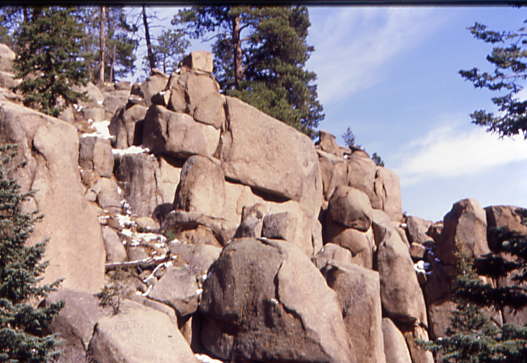
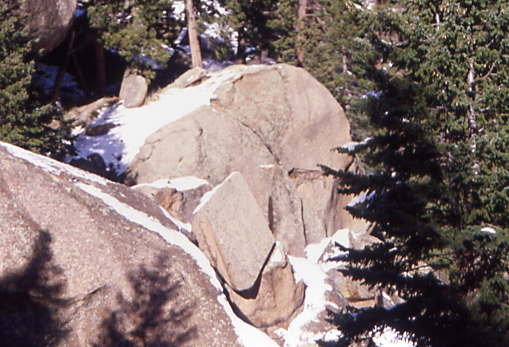
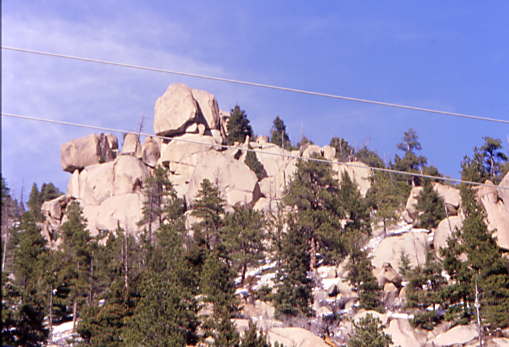
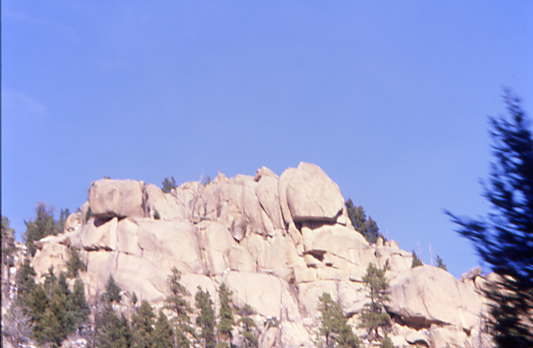
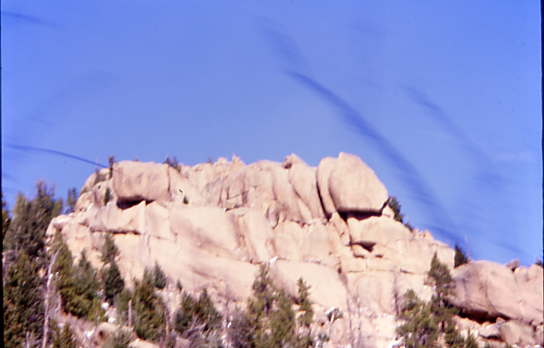
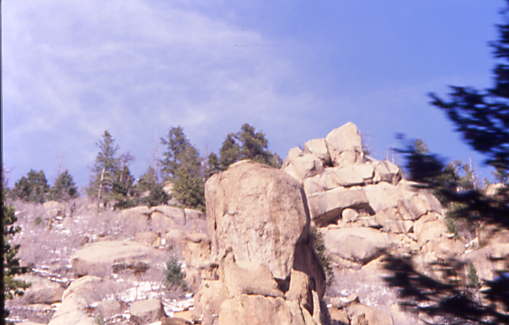
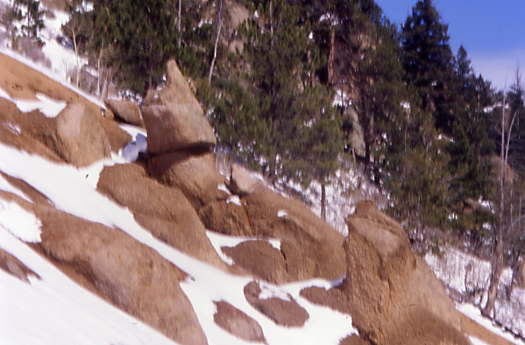
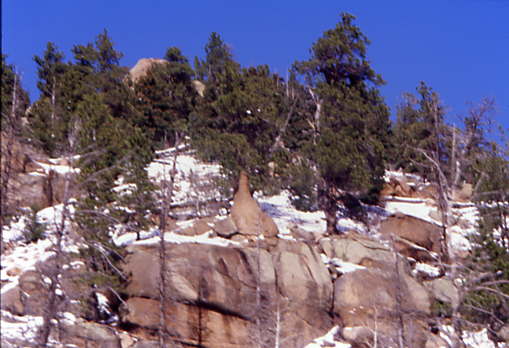
Our conductor was pointing out various boulders with names like the Sleigh or Seal Rock, as well as others. Look at the above pictures and see what you can see!
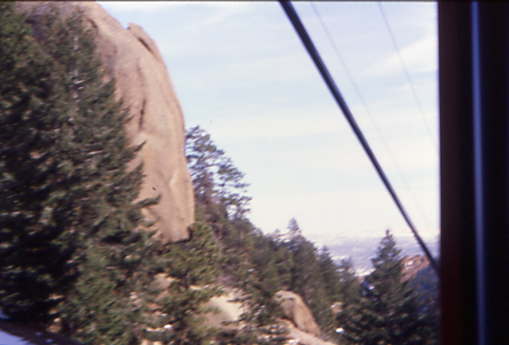
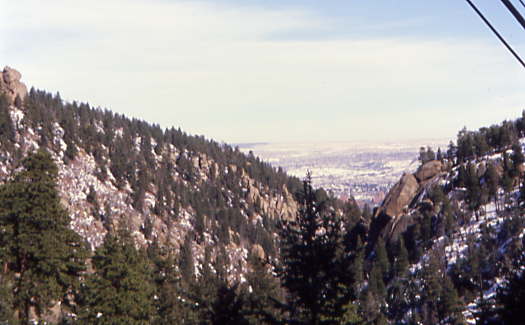
We looked back a few times towards the snow-covered Great Plains as we went through this area.
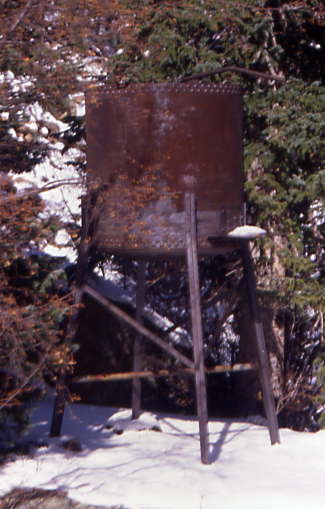
We came to Minnehaha, which is the site of a siding, water tower, and a waterfall on the south side of our train. We started up the very steep "Son of a Gun Hill" and through Hell Gate.
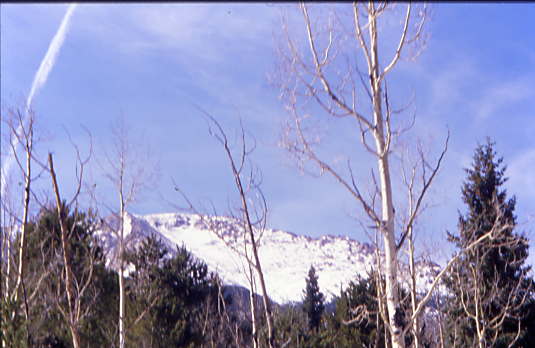
You could see Pikes Peak through the trees. The grade became gentler as we passed through Ruxton Park and passed by Pilot's Knob.
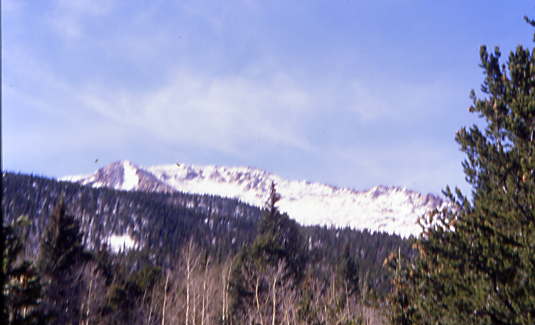
The view of the mountain nearing Deer Park.
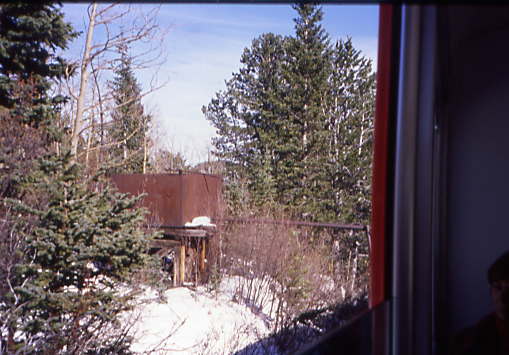
The train continued climbing, reaching Deer Park before entering the longest straight track on the railroad where the water tank at Four Mile Siding is located. Further along this straight track was Mountain View at 10,000 feet before we turned and started up "The Hill" with a 24% grade. Below are views from the climbing of "The Hill".
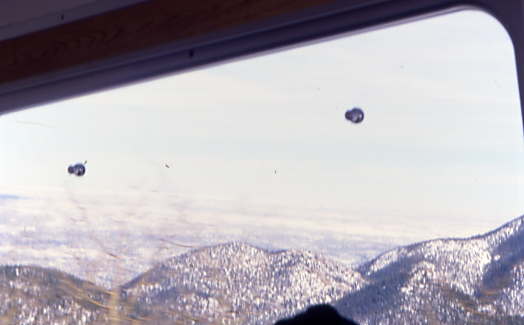
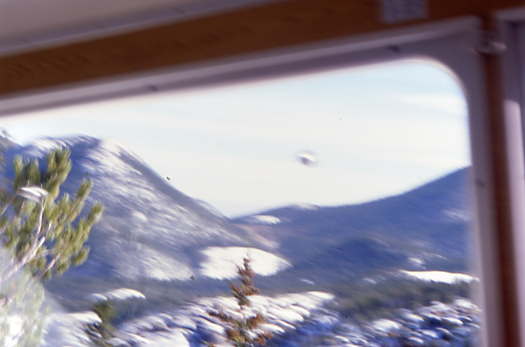
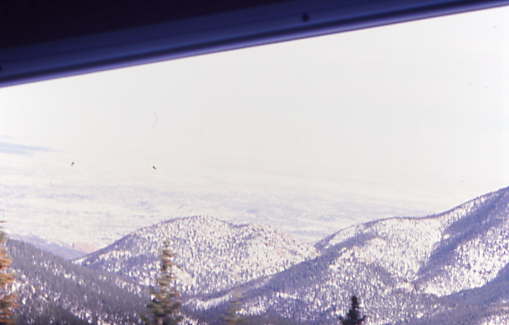
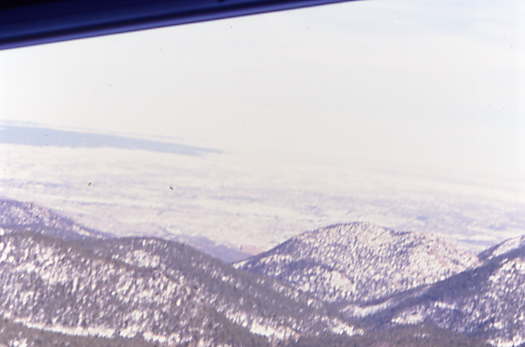
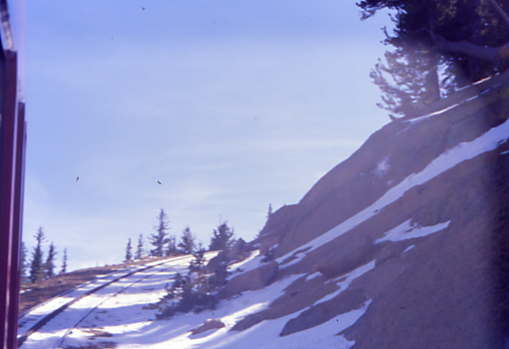
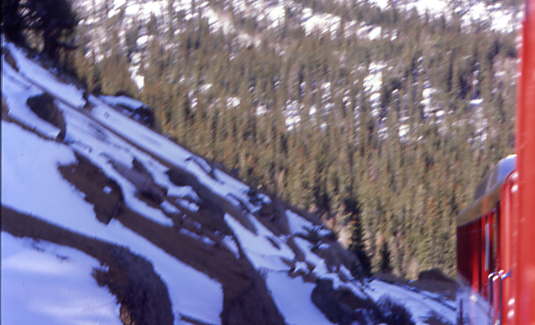
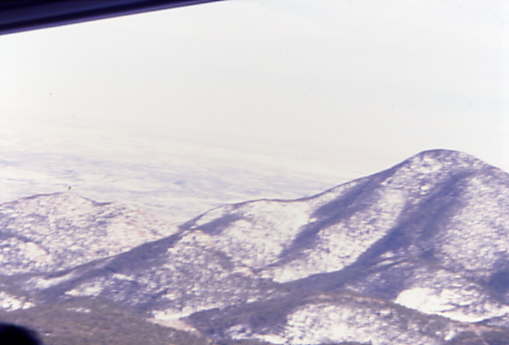
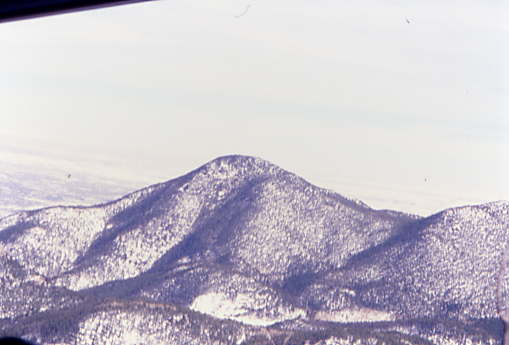
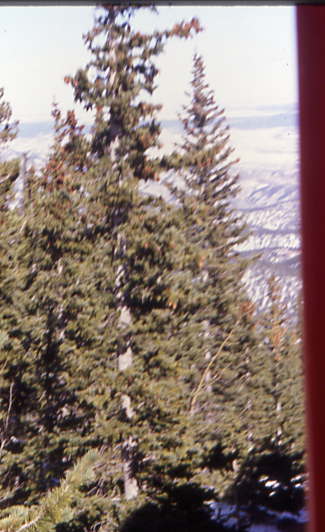
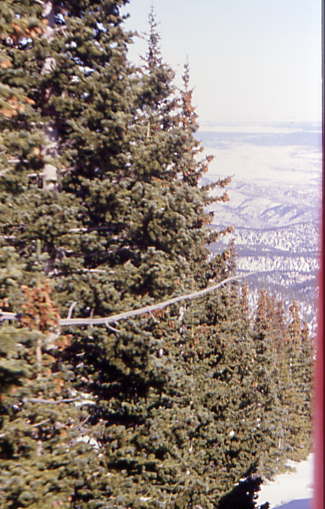
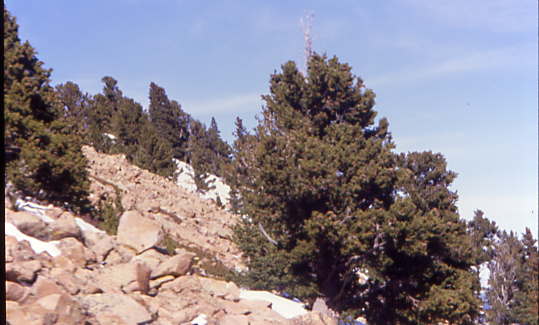
As we continued our ascent, we neared the tree line.
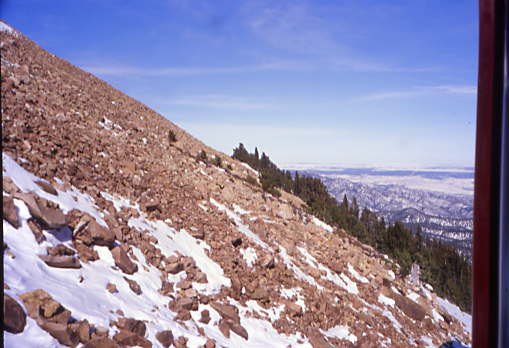
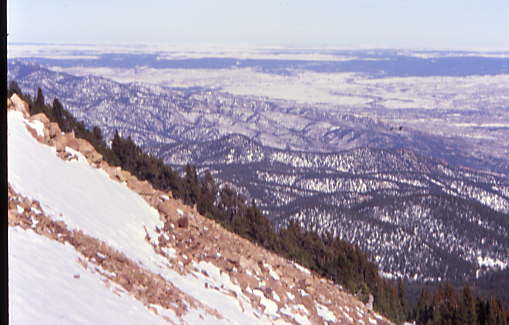
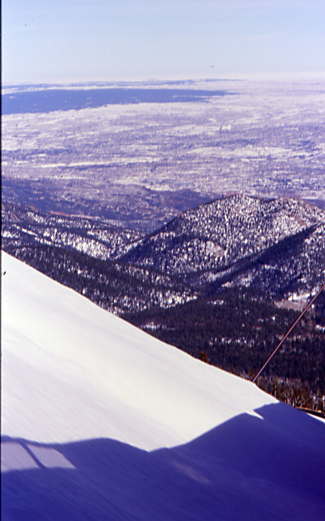
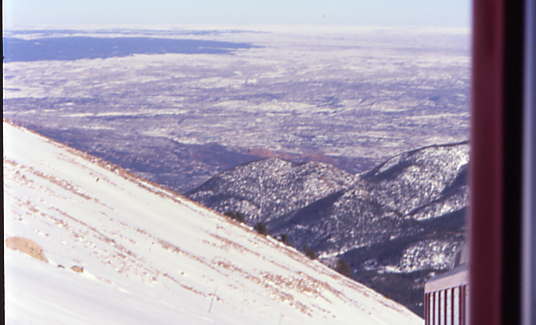
The snow got deeper.
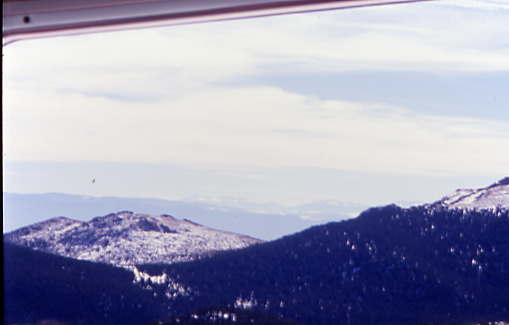
The views were stunning.

The train arrived at Windy Point, 12,130 feet where the short train was waiting for us to arrive.
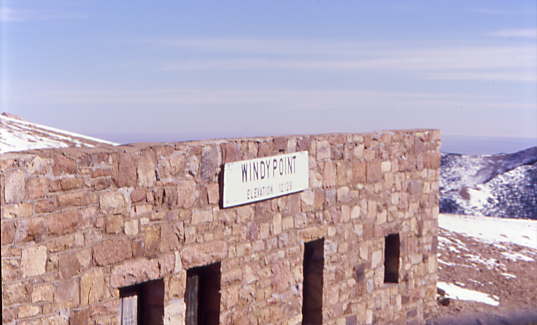
There is an old Section House here. While we waited for the short train to leave, I asked the men in the first seat by the front window if they wanted to ride forward going back down and Chris and I would switch seats with them, since I wanted to get some pictures out the front or rear for my story. Soon Chris and I were seated in what would become the rear of our train, but first we would try to go further up Pikes Peak.
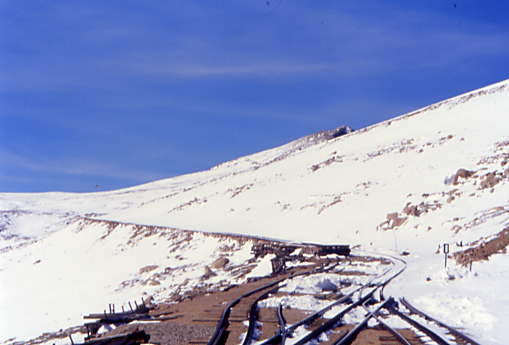
The tracks at Windy point with the snow ahead of our train on our route.
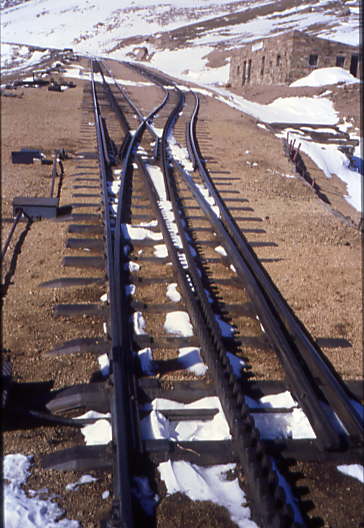
We backed out of the Windy Point siding and after it was switched, we headed up the track.
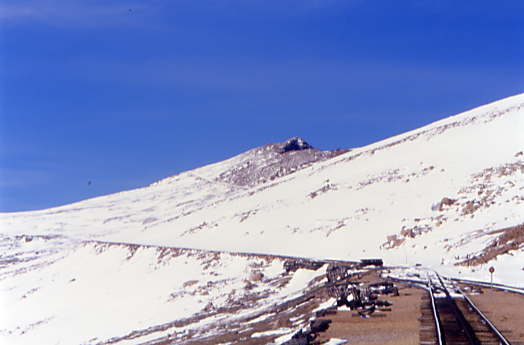
Our train approached the west end of Windy Point.
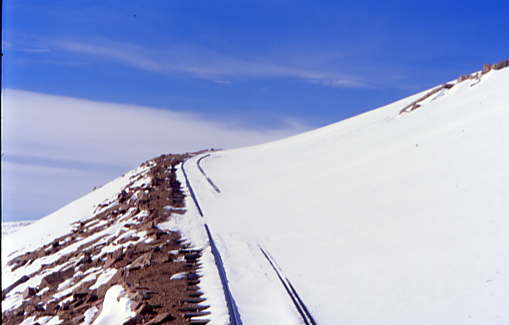
As we climbed, I had my doubts that we would be going any further,
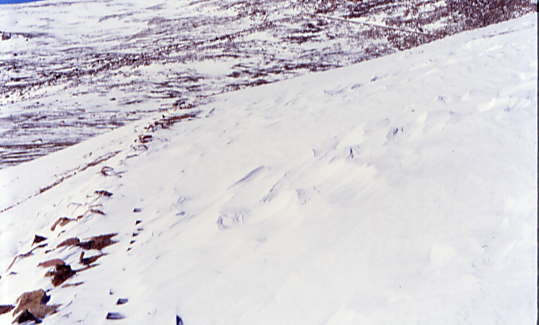
Here rails vanished into the snow.
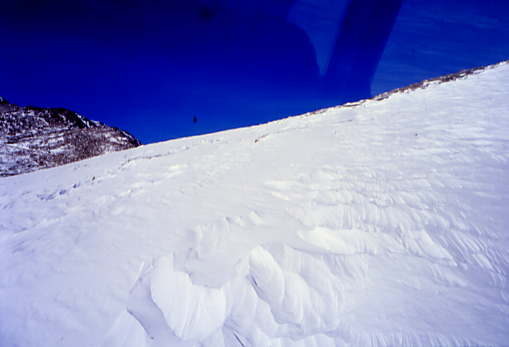
The train tried to push forward but came to an abrupt stop.
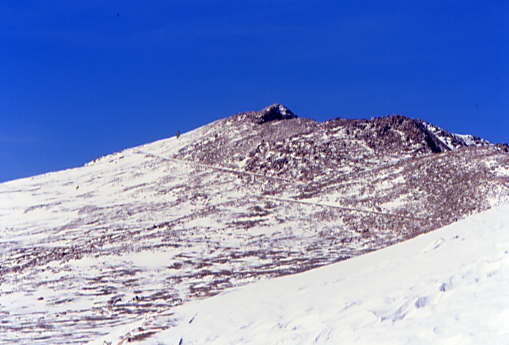
With that I knew we would not make the summit of Pikes Peak, but it still had been a great trip.
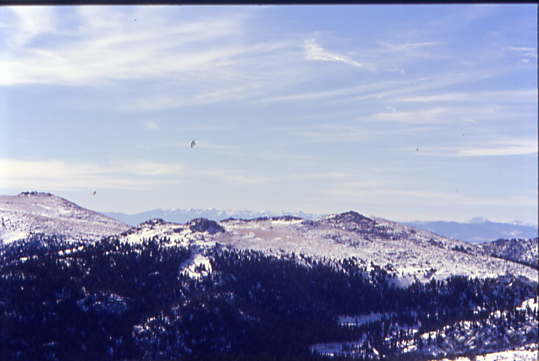
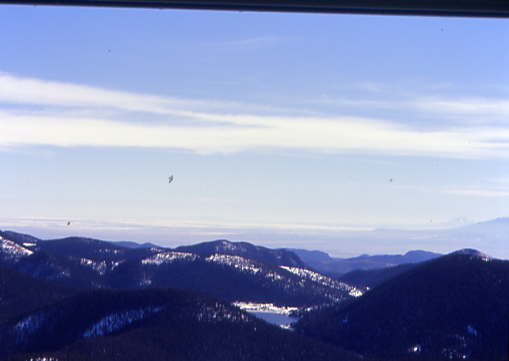
A fantastic view from where we stopped.
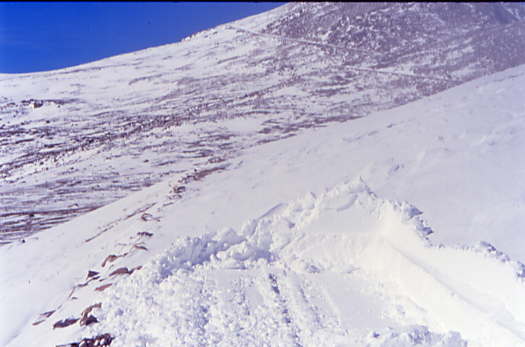
This picture shows just how much snow our train tried to go through. We would head back now but that will be in the next part of this story.